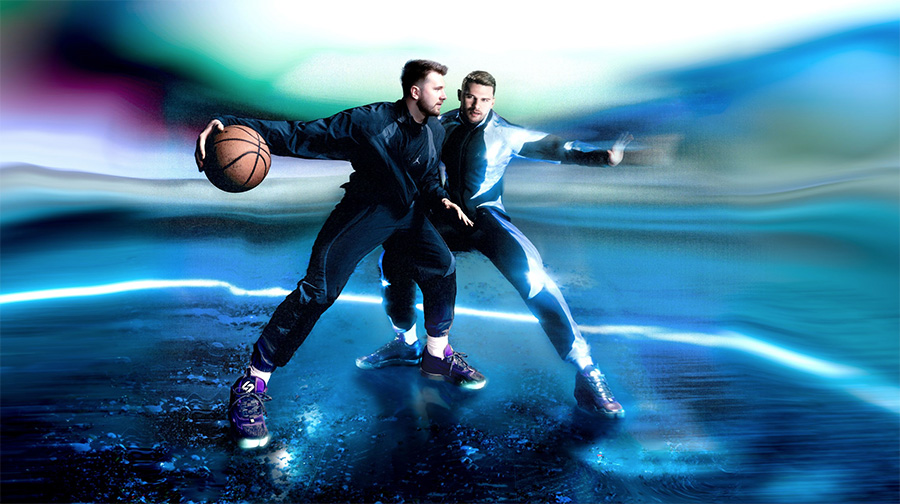Team sports equipment was the only category in the sports equipment space that grew in the twelve months through April, continuing to add to its pandemic gains, according to Matt Tucker, the director of client development for sports equipment at Circana, who recently presented its finding at the Outdoor Retailer Summer 2023 show.
Circana’s point-of-sale data shows that sales of team sports in the U.S. totaled $11.2 billion in the twelve months through April, climbing 5 percent year-over-year. In other sports equipment categories, sales declined 3 percent to $11.6 billion in outdoor sports equipment, fell 10 percent to $7.0 billion in cycling equipment, declined 23 percent to $2.5 billion in health & fitness equipment, and down 4 percent to $3.8 billion in fishing equipment.
Among the other major categories in the sporting goods space, activewear sales were down 3 percent to $37.8 billion in the twelve months through April, while athletic footwear revenues were down 2 percent to $25.9 billion.
Tucker noted that all sports equipment categories had set a new baseline at significantly higher levels since the pandemic and related lockdowns heightened interest in outdoor, fitness and team sports activities.
The team sports equipment category, initially impacted the most in the early stages of the pandemic as games were canceled, has re-baselined at the highest level among sports equipment categories. Circana’s data shows that sales of team sports equipment have increased 52 percent compared with pre-pandemic 2019 levels.
Among other sports equipment categories compared to 2019, health & fitness is up 40 percent, outdoor equipment has grown 37 percent, cycling is ahead 31 percent, and fishing has gained 20 percent.
Private Label Gaining Share
During Circana’s presentation at the Outdoor Retailer Summer Show, Tucker noted that the top growing brand across total sports equipment, apparel, footwear and accessories was Nike, with absolute dollar growth across U.S point-of-sale of $156 million in the twelve months through April. Nike was followed by Vuori, adding $78 million in dollar growth; Patagonia, $75 million; Carhartt, $70 million; Kuhl, $33 million; Cotopaxi, $32 million; 47 Brand, $27 million; Helly Hansen, $24 million; Mitchell & Ness, $21 million; Travis Mathew, $19 million; Fjallraven, $17 million; Pro Standard, also $17 million; 686, $16 million; New Era, $15 million; Chubbies, $14 million; Antigua, $13 million; Fanatics, $12 million; Outdoor Research, $11 million; and Colosseum Athletics, also $11 million.
Combining in-store brands across sports-related categories, private label brands totaled $388 million. Tucker said private label dollar and unit shares were up since 2021 and have exceeded pre-pandemic levels.
Private label share in outdoor sports equipment categories has added 0.6 basis points in the twelve months through April. Among outdoor sports equipment categories with the highest private label volume, the most significant share gains were in sleeping bags, up 8.0 basis points in the twelve months through April, and tents, up 3.6 basis points. Private label lost share in camp accessories, down 1.3 basis points; coolers, off 0.8 basis points; camp furniture, declined 0.3 basis points; and shelters, off 0.1 basis points.
In the camping category, private label gained 1 point of share in the 12 months through April, adding $43 million in share value.
Other findings Tucker noted during Circana’s presentation included:
- Top growing categories in absolute dollars across sports equipment, apparel, footwear, and accessories in absolute dollars were basketball-inspired—footwear, adding $804 million; sweatpants—apparel, $168 million; sport jerseys—apparel, $130 million; insulated cups/mugs/tumblers—outdoor, $122 million; golf full set—team sports, $116 million; pickleball paddles—team sports, $101 million; basketball—footwear, $78 million; casual pants—apparel, $75 million; fish & depth finders—fishing, $66 million; camp chairs—outdoor, $66 million; soccer balls—team sports, $65 million; golf balls—team sports, $63 million; tennis inspired—footwear, $53 million; baseball—footwear, $53 million; non-wood bats—team sports, $48 million; caps—apparel, $45 million; hard-sided coolers—outdoor, $45 million; soft-sided coolers—outdoor, $43 million; jackets/coats/parkas—apparel, $41 million; and alpine rentals— outdoor, $39 million.
- Despite the return of in-store shopping, E-commerce held onto most of its share gains over the pandemic in the sports equipment category. In the rolling twelve months through April, e-commerce accounted for 29 percent of U.S. sports equipment sales, the same rate as 2022 overall, compared with 28 percent in 2021. In 2020 as online buying picked up amid the lockdowns and in-store restrictions, e-commerce sales peaked at 32 percent of U.S. sports equipment sales. In 2019, e-commerce made up 24 percent of U.S. sports equipment sales.
- Sports equipment promotions have stabilized, representing 33 percent of sports equipment units sold in the first quarter of 2023, the same level as the prior-year period.
- A CivicScience survey of consumers who exercised in January provided encouraging findings for the beleaguered at-home fitness category. Of the respondents who exercise, 44 percent said they exercise at home most often, the same rate as a survey taken in January 2022. Twenty-eight percent exercise outdoors most often, down from 29 percent a year earlier. Twenty-three percent exercised at a gym/fitness studio most frequently, up from 20 percent in January 2022.
Photo courtesy Nike
















